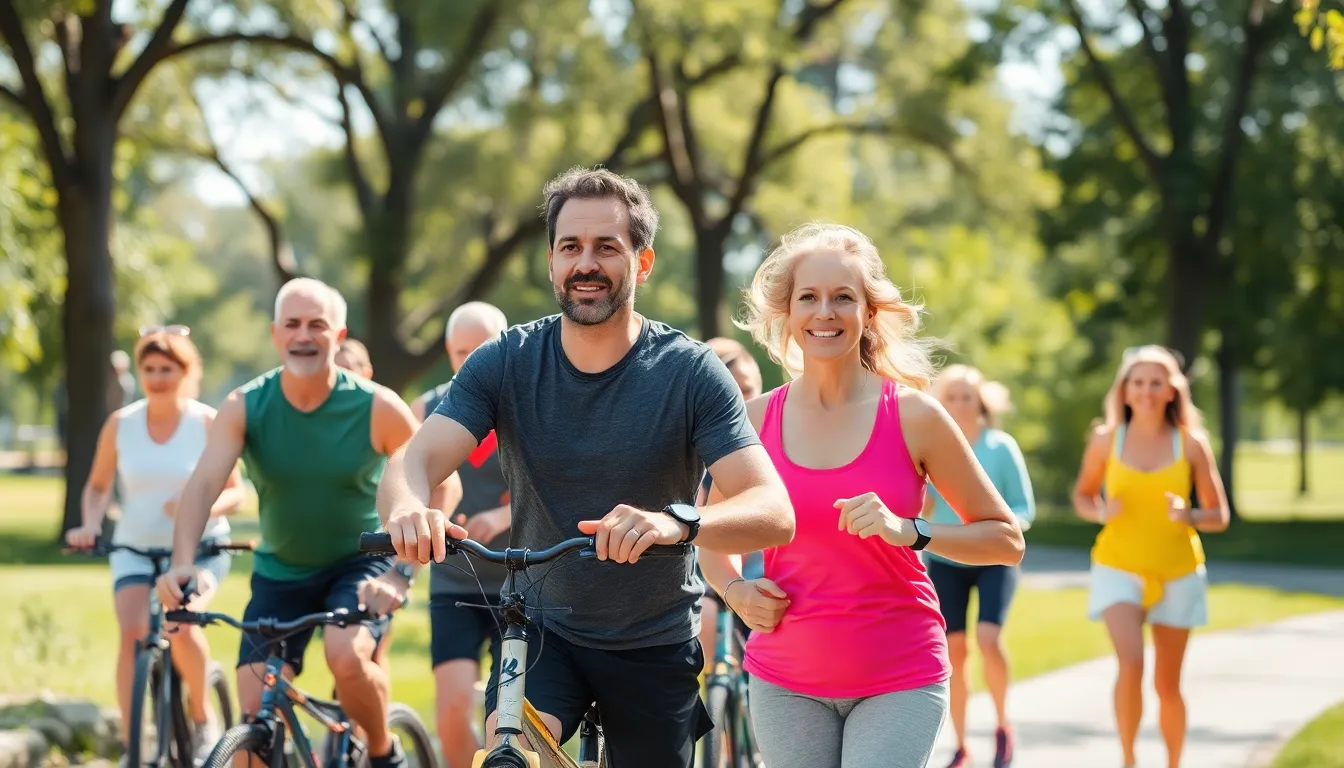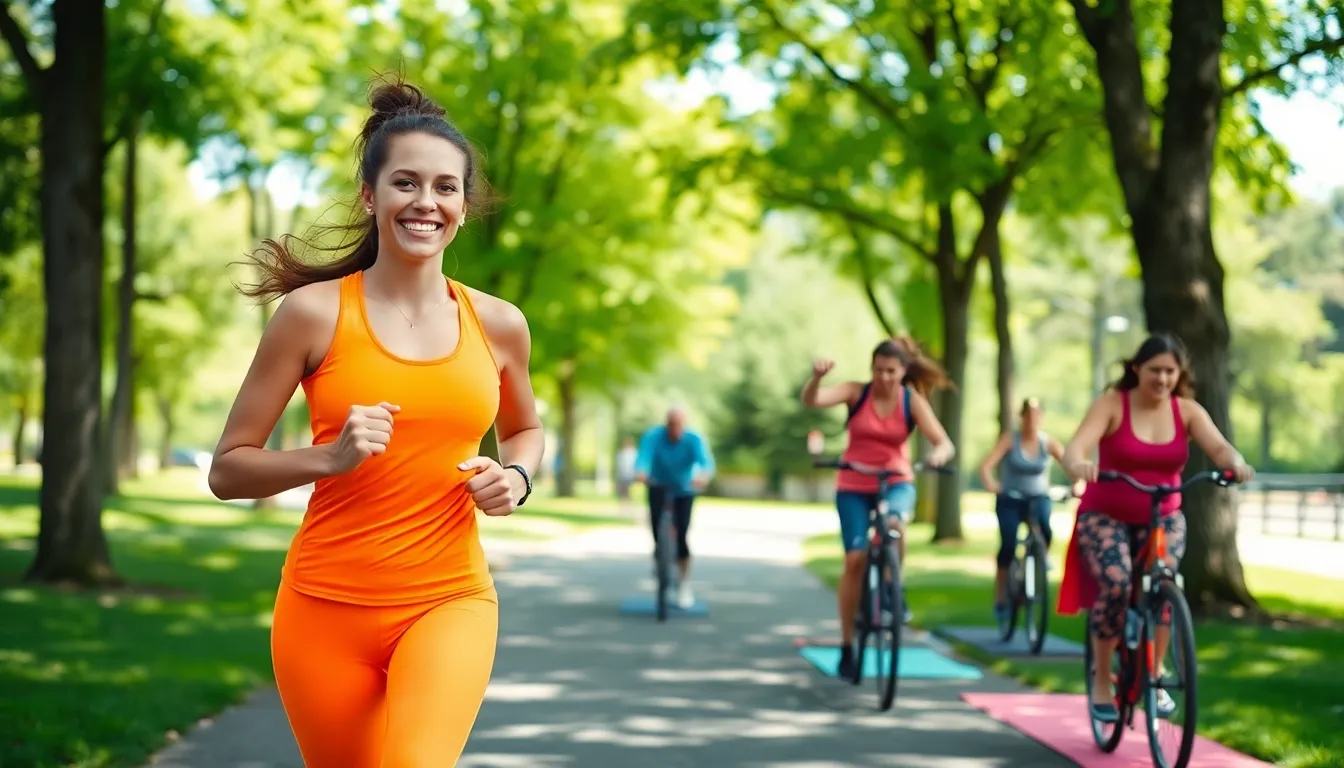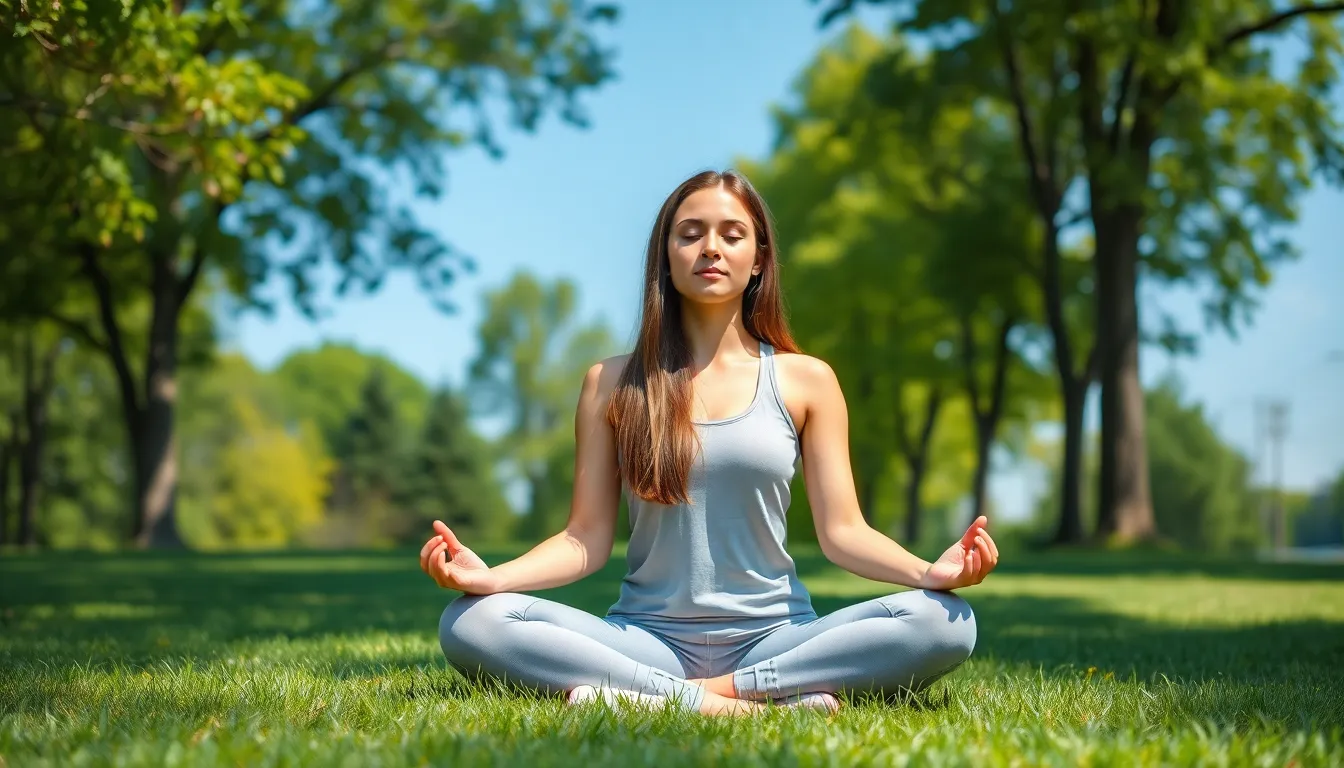In today’s fast-paced world, embracing an active lifestyle has never been more crucial. With the rise of sedentary habits due to technology and convenience, many find themselves yearning for a healthier, more vibrant way of living. An active lifestyle isn’t just about hitting the gym; it encompasses various activities that energize both the body and mind.
From outdoor adventures to simple daily routines, staying active can significantly enhance overall well-being. It promotes physical fitness, boosts mental health, and fosters social connections. By integrating movement into everyday life, individuals can unlock a wealth of benefits that lead to a happier, more fulfilling existence. Discover how small changes can pave the way for a more active and rewarding lifestyle.
Table of Contents
ToggleBenefits Of An Active Lifestyle
An active lifestyle offers numerous advantages that enhance overall well-being and quality of life. These benefits encompass both physical and mental health improvements.
Physical Health Benefits
- Weight Management: Engaging in physical activity aids in maintaining a healthy weight by burning calories. Regular activities like walking, cycling, and running contribute to weight control.
- Reduced Risk of Chronic Diseases: Active individuals lower their chances of developing chronic conditions such as heart disease, type 2 diabetes, and certain cancers. Regular exercise strengthens the cardiovascular system and boosts immune function.
- Improved Strength and Flexibility: Strength training and flexibility exercises enhance muscle strength and joint mobility. This improvement reduces the risk of injuries and supports daily activities.
- Better Bone Health: Weight-bearing exercises, such as jogging and resistance training, strengthen bones. This reduction in bone density loss lowers the risk of osteoporosis, particularly in older adults.
- Enhanced Energy Levels: Physical activity increases energy levels by improving muscle efficiency and oxygen flow. More energy translates to increased productivity and enhanced daily performance.
Mental Health Benefits
- Improved Mood: Regular exercise releases endorphins, which elevate mood and promote feelings of happiness. Many active individuals report lower levels of stress and anxiety.
- Enhanced Cognitive Function: Physical activity stimulates brain function. Engaging in regular exercise improves memory, focus, and overall cognitive abilities.
- Better Sleep Quality: An active lifestyle often leads to improved sleep patterns. Regular physical activity helps individuals fall asleep faster and enjoy deeper sleep.
- Stronger Social Connections: Participating in group activities or classes fosters social interactions. Building relationships through shared interests enhances emotional well-being and creates support systems.
- Increased Resilience: Maintaining an active lifestyle helps individuals cope better with stressors. Regular exercise equips individuals with the tools to face daily challenges confidently.
Ways To Adopt An Active Lifestyle

Adopting an active lifestyle requires intentional choices and consistent efforts. Here are effective strategies to incorporate physical activity seamlessly into daily routines.
Incorporating Exercise Into Daily Routine
- Utilize commute time: Walk or bike instead of driving.
- Opt for stairs: Choose stairs over elevators or escalators.
- Schedule workouts: Set specific times for exercise sessions.
- Engage in household chores: Clean, garden, or do yard work to stay active.
- Take active breaks: Incorporate brief exercise intervals during work hours.
- Use standing desks: Alternate between sitting and standing while working.
Choosing Enjoyable Activities
- Participate in group sports: Join a local team or club for social engagement.
- Explore outdoor adventures: Hike, bike, or swim in nature to enjoy the scenery.
- Attend dance classes: Learn new dance styles while getting fit.
- Try fitness classes: Experiment with yoga, Pilates, or martial arts for variety.
- Practice recreational activities: Play tennis, basketball, or soccer for enjoyment.
- Involve family and friends: Invite loved ones to join activities, enhancing motivation.
Challenges To Maintaining An Active Lifestyle
Various challenges hinder individuals from maintaining an active lifestyle. Recognizing these barriers helps overcome them more effectively.
Common Barriers
- Time Constraints: Balancing work, family, and social commitments often leaves little time for physical activity. Many find it challenging to integrate exercise into busy schedules.
- Lack of Motivation: Some individuals struggle to find motivation, particularly when faced with discomfort or fatigue after long days. This lack of enthusiasm can significantly impact consistency.
- Access to Resources: Limited access to gyms, parks, or safe outdoor spaces presents a challenge for many. High membership costs or inadequate facilities may deter individuals from pursuing active options.
- Injury or Health Issues: Existing injuries or chronic health conditions can limit participation in physical activities. These concerns may create fear or reluctance to engage in exercise.
- Social Influence: Surrounding environments can influence lifestyle choices. Friends or family members who do not prioritize activity may discourage others from adopting similar habits.
Overcoming Obstacles
- Prioritizing Time: Allocating specific time slots for activities helps to prioritize exercise. Setting a routine, even if it’s just 20-30 minutes a day, encourages consistency.
- Building a Support System: Engaging family or friends to join in activities creates accountability. Supportive partnerships can enhance motivation and make exercise enjoyable.
- Exploring Alternatives: Finding creative ways to move, such as home workouts, online classes, or outdoor activities, ensures access regardless of local resources. Utilizing bodyweight exercises also requires minimal equipment.
- Adapting Activities: Tailoring workouts to accommodate injuries or health concerns makes engagement possible. Consulting with healthcare professionals or certified trainers can ensure safety and efficacy.
- Setting Realistic Goals: Establishing small, achievable goals fosters a sense of accomplishment. Progress tracking helps maintain motivation, ultimately encouraging ongoing participation in an active lifestyle.
Tips For Staying Motivated
Staying motivated is crucial for maintaining an active lifestyle. Implementing practical strategies can help individuals remain committed to their fitness goals.
Setting Realistic Goals
Setting realistic goals ensures sustainability in an active lifestyle. Individuals should focus on specific, measurable, attainable, relevant, and time-bound (SMART) goals. For instance, aiming to exercise three times a week for 30 minutes each session provides a clear framework. Gradually increasing activity levels over time leads to better adaptation and prevents burnout. Tracking progress through journals or apps reinforces motivation and enhances accountability.
Finding Support Systems
Finding support systems strengthens motivation. Engaging with like-minded individuals creates a sense of community and encouragement. Individuals might join fitness classes, local sports teams, or online groups for accountability. Friends and family can offer positive reinforcement and participate together in activities, making exercise more enjoyable. Regular check-ins with a workout buddy or a coach fosters commitment and builds lasting relationships centered on shared health goals.
Embracing an active lifestyle is essential for achieving overall well-being. By incorporating physical activity into daily routines individuals can experience significant improvements in both physical and mental health. The journey toward a more active life doesn’t have to be daunting; small changes can lead to lasting benefits.
Staying motivated and overcoming obstacles is crucial for long-term success. Building a support system and setting achievable goals can make all the difference. With the right mindset and strategies in place anyone can transform their life through the power of movement. An active lifestyle not only enhances personal health but also fosters connections with others, creating a vibrant and fulfilling life.




